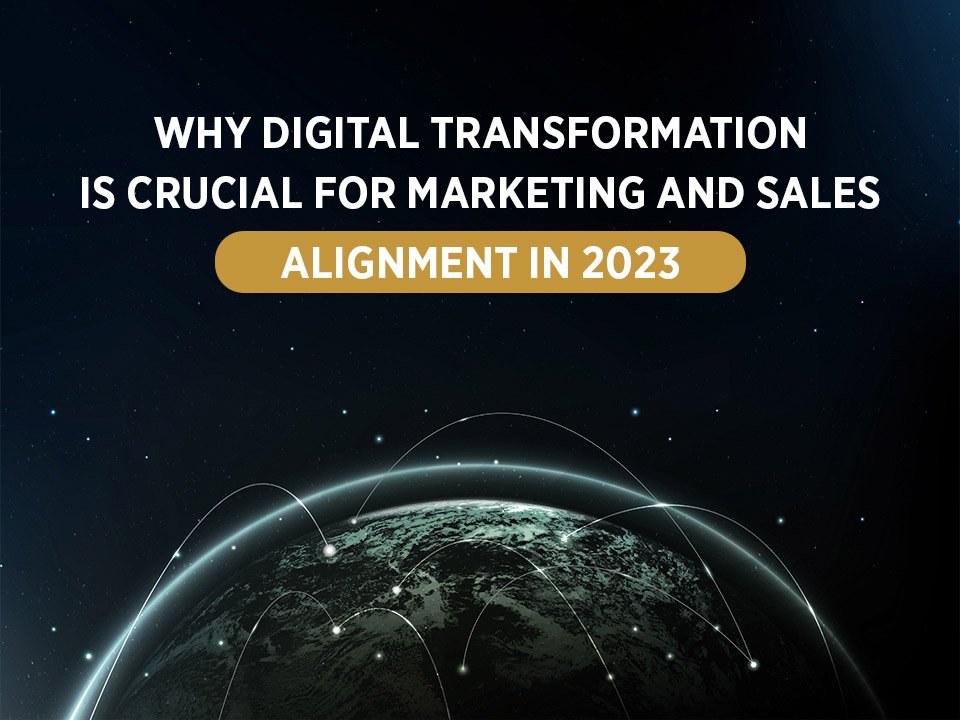
Why Is Digital Transformation Crucial for Marketing and Sales Alignment in 2023?
Digital transformation is likely a term you’ve heard many times by now. If you’re the person responsible for accelerating digital transformation within your organization, then this article is for you. Through digital transformation, companies incorporate digitization into their processes and culture to establish a digital culture.
However, as companies undergo this transformation, they often face obstacles that lead to divisional disconnects. For example, when it comes to sales and marketing teams, they need to be on the same page to drive awareness, leads, and revenue.
So how do you align marketing and sales on the journey of digital transformation?
The New Role of Marketing in Digital Transformation
Where once the responsibility of digital transformation was reserved for the CEO or COO, many components of digital projects are now managed by the CMO and marketing department.
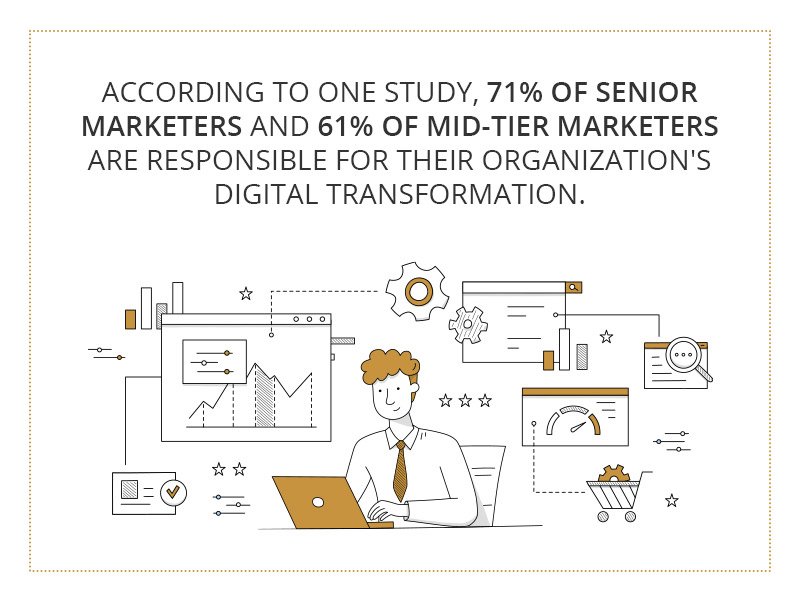
They are primarily responsible for delivering customer experience, data insights, and the ROI of marketing efforts. These key areas help build brand awareness and improve customer journeys across multiple touchpoints to attract prospects and deliver quality leads to the sales team.
Why Is Marketing and Sales Alignment Critical?
Ultimately, we want our sales and marketing departments to work together like well-oiled machines. In an ideal world, marketing teams should be able to measure, understand, and nurture prospects to generate highly-engaged leads that are then seamlessly handed off to sales teams to close on.
If the prospect is still not ready to close the deal, the process should work both ways, and the lead will go through the sales funnel till they’re decided.
Unfortunately, many do not. Prospects can fall through the cracks or need to be appropriately nurtured into paying customers. How can this process be improved for your company?

1. Adopt New Ways of Working: The way we work has changed since the COVID-19 pandemic, forcing companies to adopt new communication methods. Remote or hybrid work can thrive with team collaboration and virtual meetings, while workflows can bring leads down the funnel so that one can see what the other is doing in the business. As such, keeping customer data and meeting information up to date is more important than ever.
2. Use Customer Relationship Management (CRM): Every business needs a CRM. It collects, stores, and segments customer information to help identify sales opportunities. Examples of this type of software are Salesforce, Zendesk, and Zoho. Your CRM should also link to all your marketing automation tools to create a complete picture of your prospects and store the data in one place. If you want to learn more about using this type of management system, check out this guide to CRMs.
3. Apply Account-Based Management (ABM): This is a go-to-market strategy that sales and marketing teams can use to target specific accounts that have been identified as fitting an ideal customer profile or suitable for a product. Your ABM strategy for the company is to create customized messaging and content to move you through the sales funnel, track performance, and measure ROI.
4. Tailor Your Content: Content is essential for marketers and sellers to attract and retain potential customers. You can create a lot of great content, but what matters is the content that converts. The sales teams need to inform marketing teams about the type of customized content that helps convert customers, big and small.
5. Cultivate Your Nurture Funnel: Prospects require information at different times of their journey. For example, a blog will work well to bring a potential customer in, but it will probably be a whitepaper or customer testimonial that may push them to become a customer. Understand the intent and needs of your customer at every stage.
6. Modernize and Digitize: Introducing new systems and technologies is not enough. Sales and marketing staff need digital skills. This requires both teams to understand how the lead process works and how to use online tools like LinkedIn and CRMs to capture and convert leads.
Read More: SOCIAL MEDIA COMPETITOR ANALYSIS: THE COMPLETE GUIDE
What Are the Benefits of Marketing and Sales Alignment?
Aligning your sales and marketing teams has many benefits. This encourages collaboration within the company and allows members of each department to learn more about the work of other departments. Let’s take a look at three main benefits for your business.
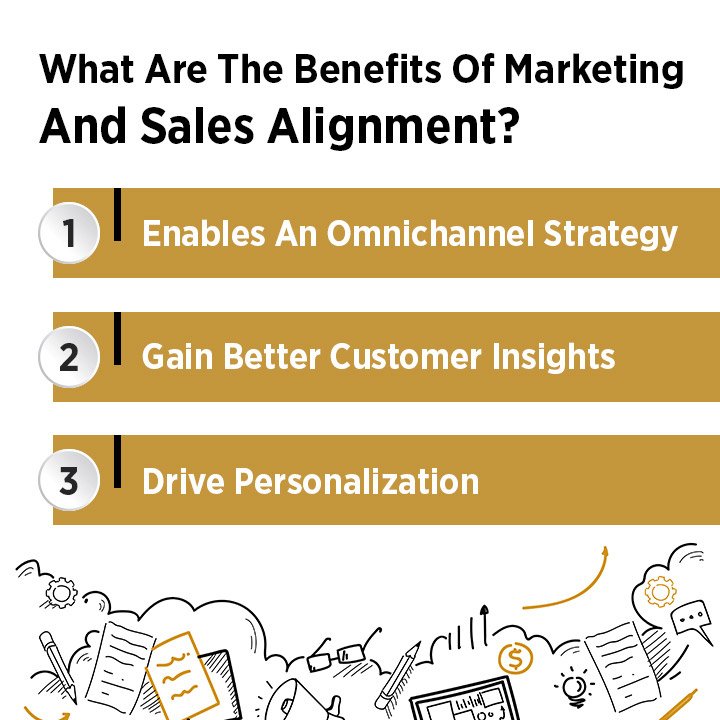
1. Enables an Omnichannel Strategy
It may seem like a buzzword, but an omnichannel strategy is crucial when your business has several customer touchpoints both online and offline.
An omnichannel strategy is all about providing a seamless customer experience. So no matter where your customers interact with your business, their journey is uninterrupted.
What does that mean in the real world? Suppose a lead is generated from a QR code in a print ad. This code redirects customers to a landing page where they are asked to provide information to download an e-book. This lead is then forwarded to the seller and moved to their email funnel to receive the intent and contact or nurture it until it qualifies as a lead to be forwarded to the seller.
Each of these interactions should be tagged with relevant and tailored information (where possible) so that it is clear who it originated from. This is the key to an omnichannel strategy. Consider every interaction with your customer.
2. Gain Better Customer Insights
When marketing and sales teams work together, essential information about prospects and customers is at your fingertips.
While marketers often have a broader view of their industry or potential customers, sellers gain specific, actionable insights that their marketing teams can use to tailor content for nurturing leads. You can get customer insights from:
- One-to-one sales conversations
- Surveys or polls
- Customer feedback
- Third-party data
- Events such as live webinars or social media live streams
- Content engagement
- A/B testing
- Market research
- Industry insights
- Podcast listens
Combining these two areas gives you an accurate and detailed picture of your prospects and customers. Combine quantitative and qualitative data to expand your customer knowledge and create detailed personas to give everyone a clear focus.
3. Drive Personalization
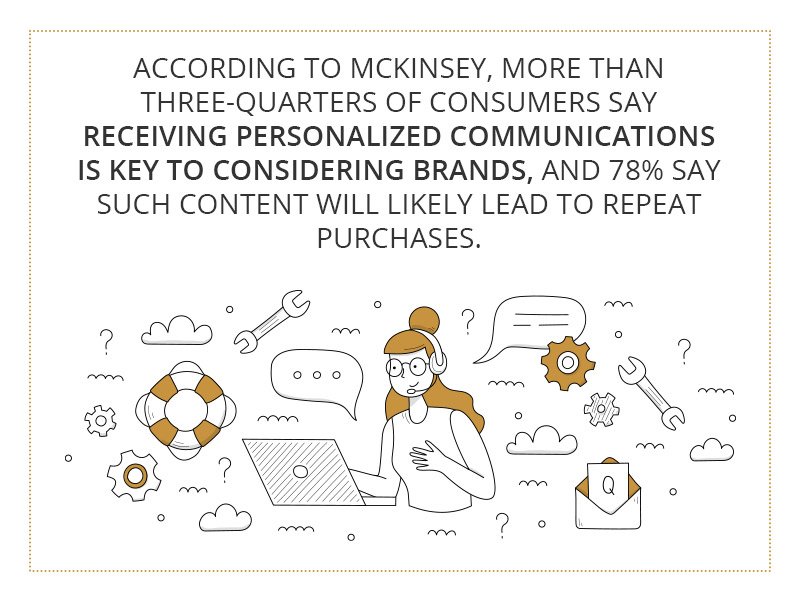
Personalization is not only effective in retaining and nurturing prospects, but it is also effective in building customer loyalty and encouraging repeat purchases. The reason is that people love to be evaluated. Customers are more likely to respond positively when your company understands and cares for them.
The most effective way to drive personalization is through content. Marketing and sales teams can work together to discuss target customers and similar prospects to create compelling and engaging communications and campaigns.
Read More: THE COOKIELESS FUTURE: WHY ARE COOKIES GOING AWAY?
How To Align Your Sales and Marketing Teams
Now that you know the reasons and benefits of aligning your sales and marketing teams, how do you do it?
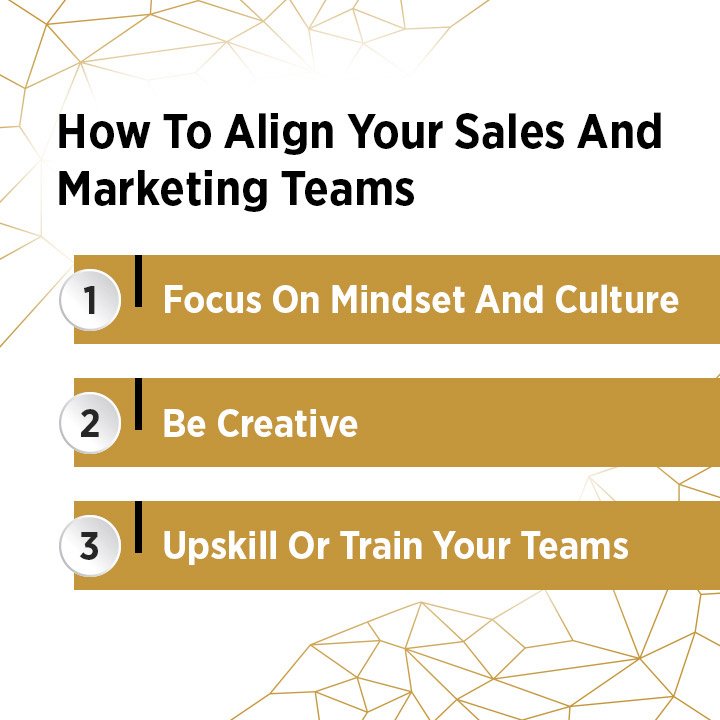
1. Focus On Mindset and Culture
Digital transformation is not just about the newest technologies. It’s about changing the mindset of embracing digital and changing the trajectory needed to remain competitive in the online world.
By embedding digital into processes and methods of working, employees contribute to fostering a digital culture. This means promoting transparency, fostering collaboration, taking calculated risks, and providing training that strengthens digital skills.
2. Be Creative
Standing out as a company can be difficult, so having a differentiator is essential. Can you create a “cool” experience or give prospects and customers something others can’t?
The Metaverse is a space that offers new ways to connect in an immersive way. Artificial and virtual reality are also tools that can be used to create new experiences. Such as a 360-degree view of one of your stores or a product line. It’s about creativity and reinventing the customer experience to deliver a distinctively memorable interaction.
3. Upskill or Train Your Teams
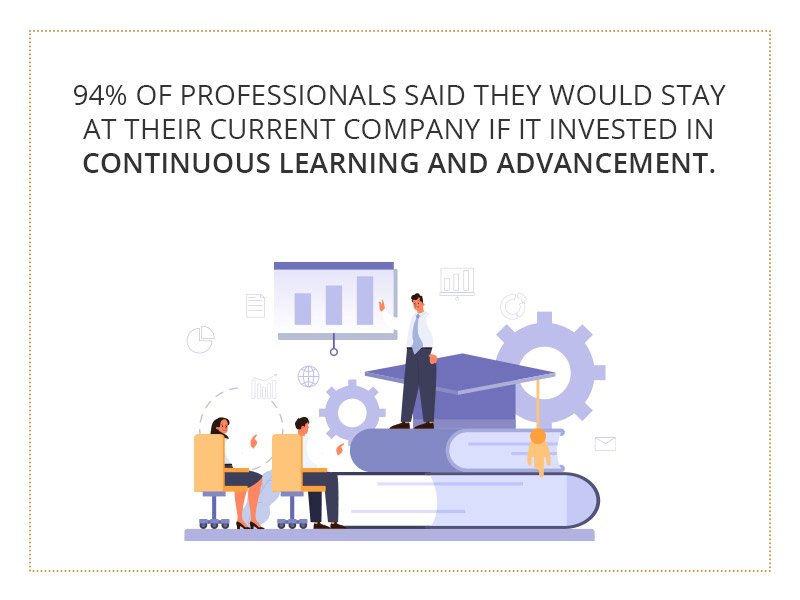
According to LinkedIn’s 4th Annual Workplace Learning Report, 94% of professionals said they would stay at their current company if it invested in continuous learning and advancement. This is something to consider if you are a company undergoing a digital transformation.
An organization’s digital transformation is only possible with the collaboration and support of all employees. This is especially true for sales and marketing teams responsible for customer acquisition and conversion. As such, you need the knowledge and digital skills to interact and make an impact online.
With remote and hybrid work becoming the norm in many companies, many professionals choose jobs that offer an excellent work-life balance. In other words, the decision rests with the employee, and it is up to the company to provide career-enhancing perks, such as in-house training and ongoing professional development to attract and retain employees.
Conclusion
As you can see, there is much to consider regarding the digital transformation of marketing and sales teams. But once alignment is achieved, the benefits are endless. Form a cohesive and happy team to retain, lead, and sell customers to help your business compete and thrive in the modern world.
Hiring a digital marketing agency is cost-effective for companies looking to improve sales and grow their business. Digital marketing agencies help companies attract new customers, improve brand awareness, and generate more revenue.
Ready to start growing your business with Gold Lion Technologies? Contact us for a FREE business audit.


